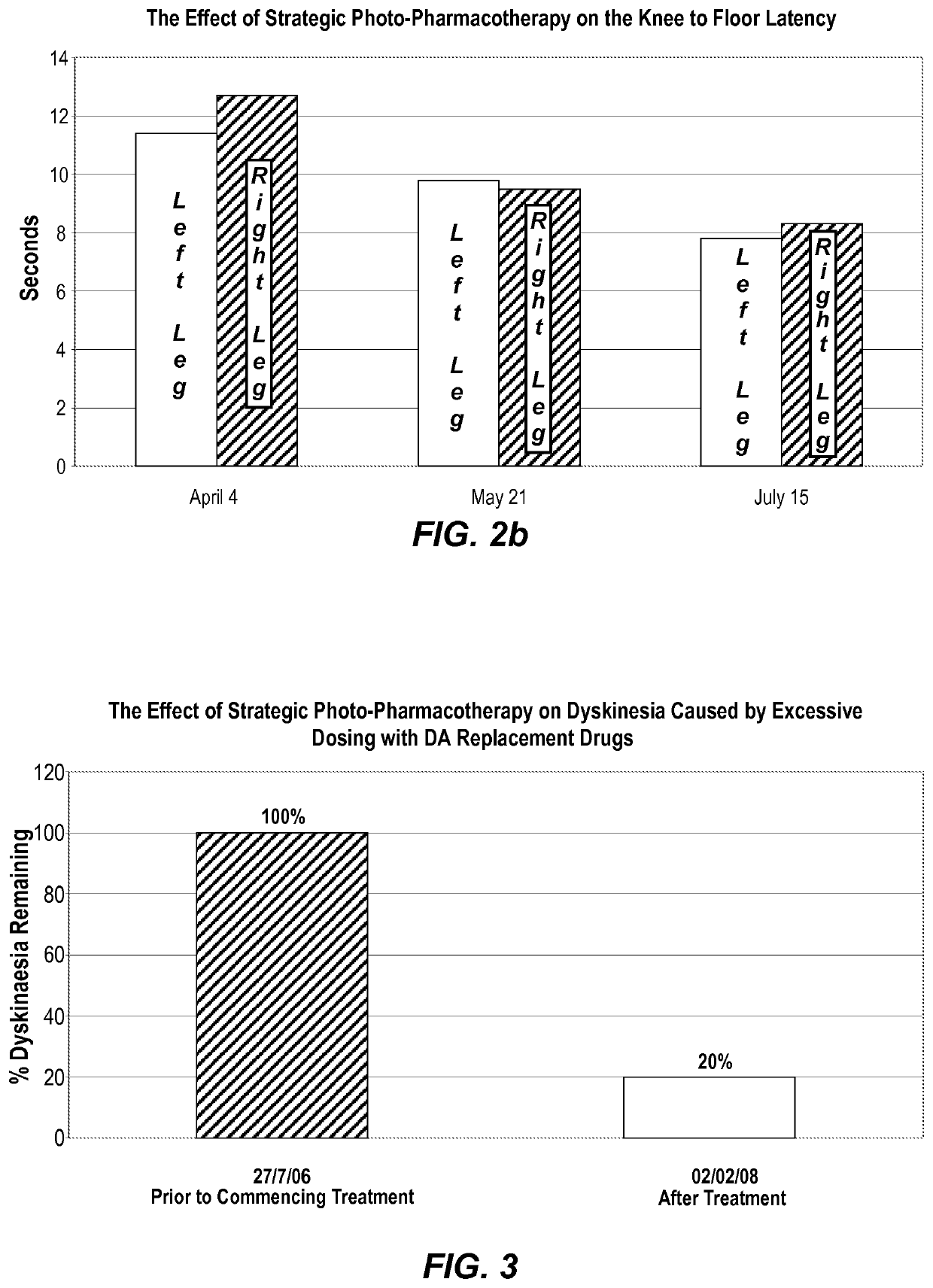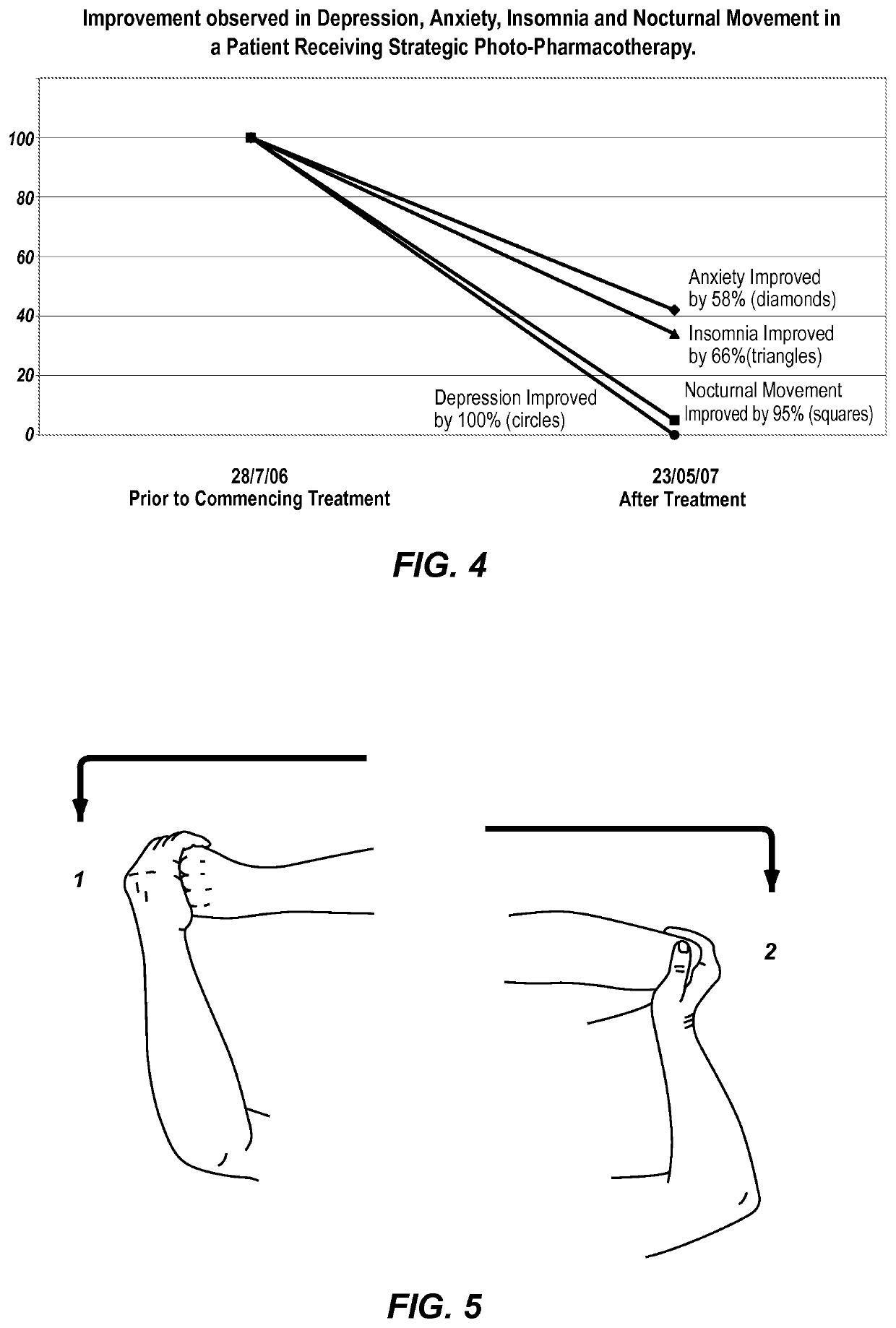Methods for preventing and treating motor related neurological conditions
a technology for neurological conditions and motor neurons, applied in the field of motor related neurological conditions, can solve the problems of amine function, and reducing the ability of these neurons to transmit dopamine, so as to stimulate the dopaminergic response, slow or stop the progression, and reduce the dosage
- Summary
- Abstract
- Description
- Claims
- Application Information
AI Technical Summary
Benefits of technology
Problems solved by technology
Method used
Image
Examples
Embodiment Construction
[0028]Ambient light provides a reference point for the manner in which light may be administered to a subject in accordance with teachings of the present invention. The phrase “ambient light” refers to an amount or level of light, such as an intensity, a photon density, or an irradiance, or energy, of light. “Ambient light” may refer to a collection of wavelengths of visible light, such as those present in so-called “white light,” which is more accurately referred to as “polychromatic light,” or in narrower bandwidths (e.g., colors, etc.) of light. As will become more apparent from the ensuing description, it may be beneficial in some embodiments of the present invention to expose a subject to above-ambient levels of some wavelengths of light, while limiting the subject's exposure to other wavelengths of light to below-ambient levels.
[0029]As used herein, the phrase “ambient level” may refer to an average of the level or amount of a particular bandwidth of light in ambient indoor li...
PUM
 Login to View More
Login to View More Abstract
Description
Claims
Application Information
 Login to View More
Login to View More - R&D
- Intellectual Property
- Life Sciences
- Materials
- Tech Scout
- Unparalleled Data Quality
- Higher Quality Content
- 60% Fewer Hallucinations
Browse by: Latest US Patents, China's latest patents, Technical Efficacy Thesaurus, Application Domain, Technology Topic, Popular Technical Reports.
© 2025 PatSnap. All rights reserved.Legal|Privacy policy|Modern Slavery Act Transparency Statement|Sitemap|About US| Contact US: help@patsnap.com



